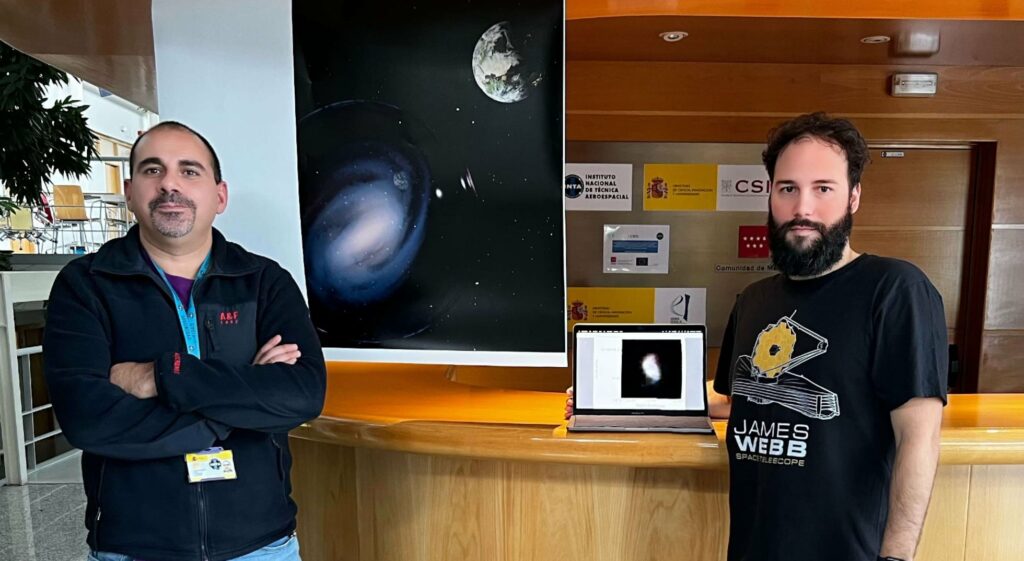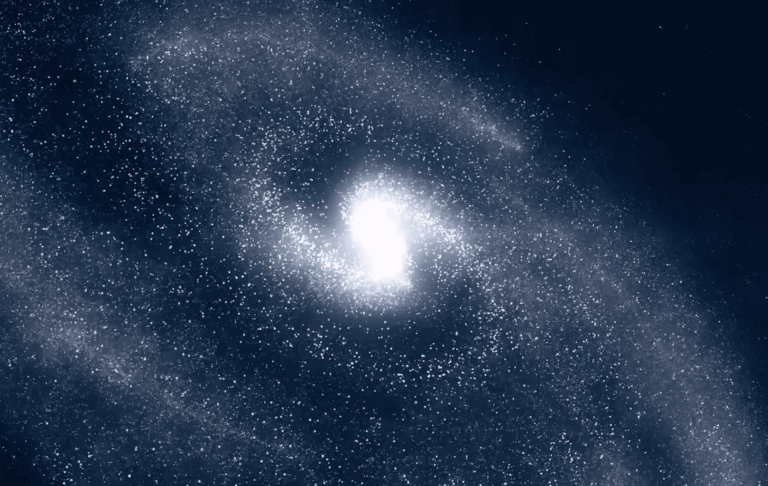Astrophysicists have uncovered a twin galaxy of the Milky Way that dates back 11.7 billion years, located at the outermost reaches of the universe
A series of pictures shows astrophysicist Luca Costantin’s position in Cantabria, Spain over a period of time. Turning San Vicente de la Barquera’s sand and green slopes and into I decided to catch up on my internet during my day off. He easily places alarmingly:, “I spend my time checking mail on and off the working-management even during a holiday to the detriment of my sleep schedule.”
To Martin’s delight, fresh pictures in his mailbox had been distinguishedly done by James Webb Space Telescope, a photo-taking object of a new technology. “Whilst I was in the process of laying down the galaxies, then, one in particular stood out,” he says. Others had already identified the galaxy Ceers-2112 – ‘my brother’ on the other side of the universe. The study described in this journal was Nature which is considered the leading scientific journal in the world.
The universe, comparable to our human life, is considered to be the age of about 13,8 billion years old. By studying the SWIRE infrared images, the researchers unveiled evidence of Milky Way-type galaxies in 11.7 billion years ago which is 15% from the current age of the universe. Fluctuations caused by the sensitive and powerful James Webb Space Telescope device were revealed by the faintness of light, which was emitted during the early stages of the universe.
Costantin, a 33-year-old Italian scientist, compares the achievement to the segue of sight to the Milky Way of earlier time. From the point of view of an astrophysicist Pablo G. Pérez González, the ancient individual who has never been depicted in the mirror, at the age of 15, the portrait from a twin-sister from an unknown species, has received it. This galaxy, Ceers-2112, is the farthest from Earth that has been found to resemble our own Milky Way. It is the most distant Milky Way-like galaxy available to science at this time.
It is a stary constellation, lying between the Ursa Major and Terry constellations, and its shape is resembling a dotted line. Besides the Arthur star, which is the second brightest star in the sky, it also has many other impressive stars. González-Pérez, one of the scientists who led the research, recognized that the celestial bodies of Ceers-2112 had about 3.9 billion times the sum of the solar masses and exactly correspond to the calculations of the simulated galactic appearance at that time. Moreover, he follows it up with an argument that our galaxy had not even ten percent of these solar masses as it is now. This study was performed in the Astronautical Center (INTA-CSIC) in Torrejón de Ardoz, Madrid, the site of jobs of Costantin and Pérez González.

A bar, with or without spiral arms, is present at the centre of the Milky Way along with others spirals in the local universe. Thirteen years back, the Hubble Space Telescope, while much earlier than the James Webb Telescope, offered scientists the opportunity to analyze up to 2000 similar galaxis. From a study performed by the astronomers of NASA it was deducted that the central bars are a product of the final phase in a spiral galaxy’s evolution, when the frequent deviations in the stellar orbits were emerged due to the instability. While in this bars, many clouds of gas associate to form the stunning sight of galaxy and the creation of new stars.
Among these was galaxy ceers-2112, which beamed light detected from the telescope when it was have evidently only existed for 2.1 billion years. Surprisingly, such young galaxy exhibited one-of-a-kind bar at its core. … Pablo González highlights that for these long structures, it’s of paramount importance.
They fulfill their function by intervening into things such as generation of life. So that the Sun had time to create its enclosing region with metals and outer atmospheric layers and a planet orbits around it here with the tremendous abundance of iron, nickel, carbon, silicon, and other elements needed to sustain life, all this means earlier stellar bodies with non-circular orbits, or spirals, transferred material from primal star-forming areas within a galaxy.
Just within the last four years, SPT0418-47, another spiral galaxy in connection with the Milky way system, for instance, has already been found. This gallaxy at the beginning of universe when the era was 1.4 billion years was that time a huge and only stable thing. Nevertheless, unlike ours (the Milky Way) it also had no bar on its central axis. “There could be countless ‘twin’ galaxies to the Milky Way because all stars are just an arrangement of the same collection of elements, whether they are observed in a different period of the cosmic time.”
After González Pérez declare that Milky Way twins development is intended to be a topic to him. The name of the distant spiral galaxy ceers-2112 was an honor for the Cosmic Evolution Early Release Science, which is about investigating the evolution of the stars. The scientists from the Center for Astrobiology are the participants of the project. Astronomer from México, Yetli Rosas Guevara, praised a study that suggested that most spiraled galaxies with central bars existed in the dawn of the universe. She emphasized human importance of the James Webb Space Telescope, which allowed for detection of the faintest light of the galaxies that dwell in the vast space. Humanize: Rosas Guevara foresees that further observations would find out not it was a Milky Way twin sisters recurrence or it was just a once in a lifetime.
Do not forget to share your opinion with us to provide you with the best posts !




0 Comments